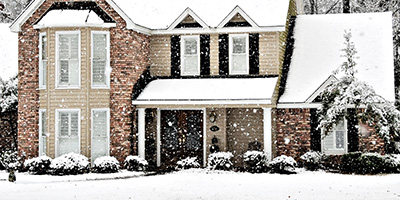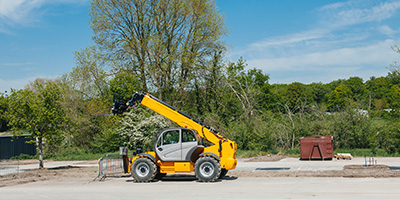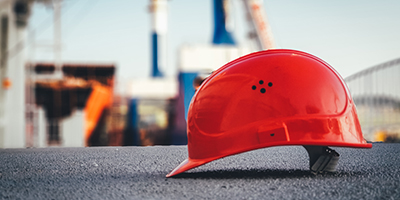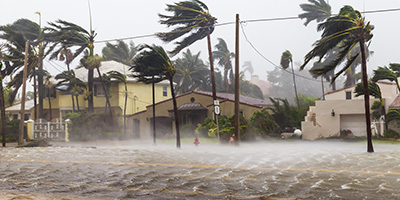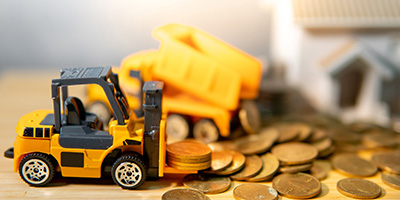How to Write a Waste Management Plan for Your Jobsite
Handling multiple debris types on the next job? Our 7-step guide can help.
Make cleanup a breeze with a roll off dumpster:
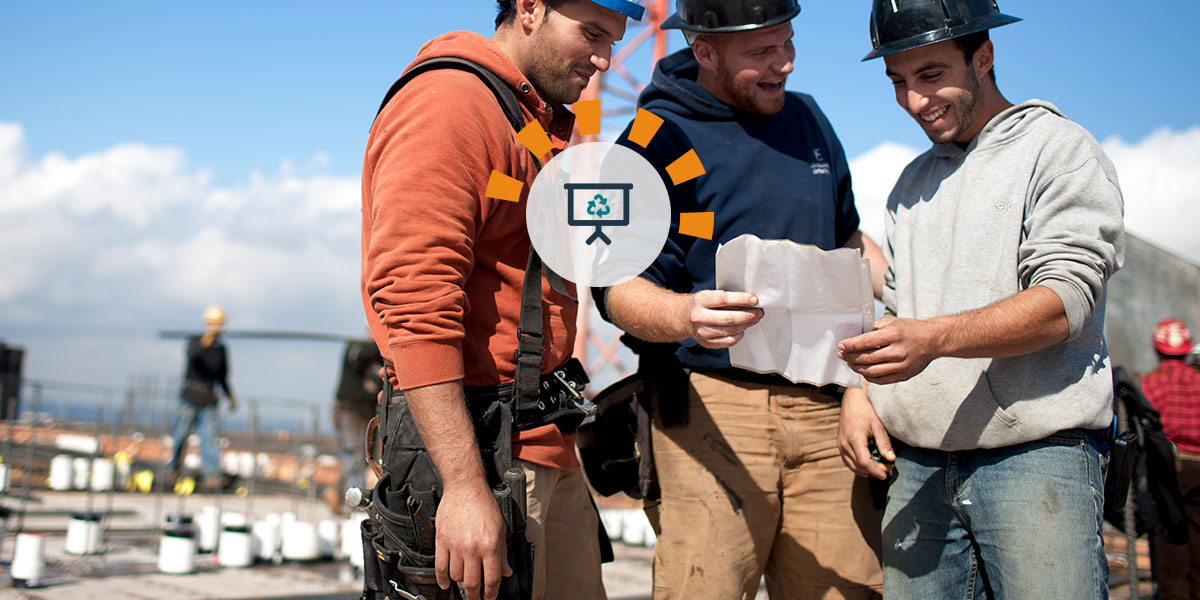
7 Steps to Create a Waste Management Plan for Your Project
Waste management plans aren’t new, but in recent years they’ve become more of a necessity when planning a construction job – especially since American investors are moving to a sustainability-focused investment model. From 2018-2020, the number of sustainably invested assets under management grew from $12 trillion to $17.1. This sustainability trend is affecting all industries, including construction.
We’ve consulted with industry experts from the Recycling Certified Institute, the National Waste and Recycling Association and The ReUse People to give you all the tips you need to write a waste management plan for your next construction job.
What Is a Waste Management Plan?
A waste management plan deals with more than just waste. At its core, a waste management plan – also known as a WMP – is a record of materials removed from a jobsite and their byproducts. It lists the site materials, how much can be diverted into recycling or reused, how much is going to a landfill and where it’s going.
There are four main reasons you need a waste management plan:
- To keep a construction site organized from top to bottom.
- To recoup losses on materials. Recycling is cheaper than using just a landfill.
- To gain LEED certification. LEED, which stands for Leadership in Energy and Environmental Design, is a sustainability rating system for new construction or remodels. Many large corporations and municipalities are requiring LEED in all new and remodeled buildings.
- To follow local regulations, which often require WMPs.
How to Make a Construction Waste Management Plan
Generally, hiring LEED consultants is a condition in the contract, but these are mostly for massive undertakings with companies that like to boast about having a “zero carbon footprint” when making a new building. Outside of this case, creating a WMP is a DIY process, and you should be fine if you set realistic goals and implement a solid plan. Here’s a quick guide to working on this yourself if you’re not planning on using a LEED consultant.
Jobsite Waste Management Plan FAQs
Outside of using a specific version of a waste management plan from the project owner or municipality or writing your own waste management plan based on free examples you find online, follow these overarching steps to ensure you have the information you need to complete your plan and submit it on time:
- Determine who needs to be involved in the planning process. This will involve both internal and external contacts.
- Complete your waste diversion estimates as soon as you can and submit them to the local municipality to obtain permits.
- Locate where your waste can be sorted depending on your waste diversion goals, and collect quotes or make inquiries to choose the right hauling partner.
- Before your on-site team starts working on the project, tell your employees how you’ll set up the site for waste removal.
- Gather documentation like weight tags from your waste removal provider(s) and the facilities where the waste gets hauled.
- Prep and submit the final waste report to the municipality, building owner and LEED consultant if you’re working on a LEED project.
Waste management plans serve several key purposes on construction sites including:
- Keeping debris from piling up on jobsites so projects don’t get held up.
- Ensuring that contractors and subcontractors meet the project owners’ and/or municipalities’ recycling and diversion requirements, especially for LEED and other green construction projects.
- Saving money since recycling some materials can bring rebates.
Step 1: Identify Your Waste Management Team
Begin by determining who has to be involved with the waste management planning process. Stephen Bantillo, the executive director of Recycling Certified Institute, advises that it’s best to do this during the architecture phase, since the materials you’ll use – and the quantities of each – will be drawn up at that time.
First, decide on your point person for the waste portion of the project. Often, a foreman or direct subordinate will draw up the waste estimates part of the plan. If there is a LEED consultant, they will play a key role in advising plan development. It’s a good idea to have the point of contact for your waste removal service on the team. If a member of the ownership isn’t on the team, they’ll at least want the preliminary estimates as they factor into the cost.


Step 2: Estimate the Recycling and Waste Generation Benchmarks for Your Materials
According to Bantillo, many jurisdictions require waste estimates before permits can be approved. This is why the architecture phase, when materials used are also calculated, is the ideal starting point for creating the estimates. Your waste estimate should include:
- The tonnage of each material.
- How much the jobsite will recycle, reuse or send to a landfill.
- The facilities where the waste will be hauled.

“Having the waste diversion estimates completed upfront allows the person applying for the permit to assess the reasonableness of the expectations in the jurisdiction; the estimated wastes are often based on average ranges, and all projects are unique.”
Estimating waste isn’t much different than estimating materials for a building. Each job is different, and the amount of waste depends on how much square footage the building was or will be, and what % of the materials will be recycled. Our guide to setting waste diversion goals can help with the initial calculations. For a more in-depth dive into diversion calculations, try the U.S. Green Building Council LEED v4 calculator.
Step 3: Find Appropriate Facilities to Handle Planned Waste
Do you know the location of the nearest landfill that will let you dump? Do you have a relationship with a hauler? These are all questions that must be answered ahead of time and then verified.
Often, the project manager is tasked with answering these logistical questions, which can be different from one county to the next. So, partnering with a waste removal provider with a nationwide reach and knowledge of local disposal options can help speed up this process no matter where you’re working.
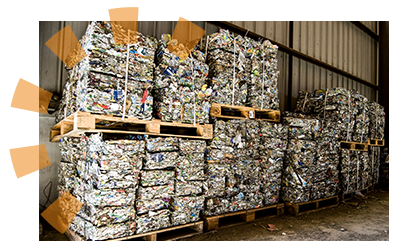
Match Diversion Rates With Capabilities of Waste Facilities
You will also have to make sure that the facilities you’re reaching out to can meet your project’s waste diversion rates.

“Right now, recycling facilities are only at about 60% capacity. Also, municipalities generally set the contract requirements in their requests for proposals (RFPs). If recycling facilities can’t meet the requirements, they can ask for changes in the requirements or not submit a proposal. The recycling facilities compete with each other. Some materials do not have robust markets. If a municipality were to require facilities to take less commonly recycled products, it would be at a higher cost. And some materials are not suitable for single stream and ideally are managed separately even though they can be recycled – like film plastics.”
By planning ahead, you’ll avoid having your project slowed down because a dumpster gets rejected at a facility – and make sure you achieve the target diversion rates. This is another area where having a national waste partner can help. The right company will help you match your diversion rates and project materials with the right disposal or recycling facilities in the area.

Step 4: Communicate the Plan to Your Employees
Communicate your waste management plan to your workers so they know where to place waste materials. For example, it’ll be important to explain if waste will be site-separated or mixed (i.e., commingled).
Site-separated is better for diversion rates, but requires more dumpsters and space on a jobsite. In your plan, list steps of where waste is expected to go and what is to be done with it so everyone is clear on the process.
By completing the WMP early in the building process, you can write subcontracts to ensure that bins reserved for recycling and materials to be reused are not mixed into waste piles. Some contractors stipulate that a subcontractor can’t receive full compensation until quality service is achieved.
Reuse to Achieve High Diversion Rates
To reach high diversion rates, you need to share where dumpsters are going, what materials you’re recycling and your goals. Tell workers what will be reused.
The key to getting a diversion rate above what a recycling center can give you is to reuse materials. When supplies are resold whole – such as an unused box of nails or a cut board piece that still could be of use – 100% of that can be calculated into the diversion rate for the worksite.

“Some states (such as California) require a 75% or higher diversion rate and source separation. So, treated lumber goes in one pile, untreated another. Commercial projects often stipulate on dumpsters or reuse piles, ‘clean wood only’ and force subcontractors to make sure that material is in, or they don’t get paid.”
Step 5: Submit Waste Estimates to Obtain Permits
The most important thing to keep in mind with permits and regulations is they vary between cities and states. Be sure to research and speak with regulators so you know their expectations.
“Several municipalities have software capable of calculating, based on the materials of the building and the square footage, how much waste they expect you to create,” Bantillo said. “If you can show you have an estimate similar to theirs, it can expedite the permits process.”
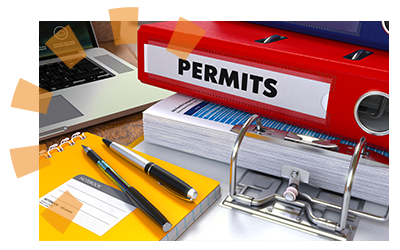
In addition, LEED certification requires that waste estimates be verified by a third party chosen by the LEED consultant. They will evaluate key points including:
- How much the overall tonnage of the waste will be.
- What percentage each material will be of that total.
- What percentage of each material is waste vs. recycle/reusable.
- Where all materials will go once they leave the worksite. This will include the company hauling the waste, recycling facilities, landfills and where reuse materials are sent to be sold.

Step 6: Collect Waste Diversion Reports
During the project, every hauler you work with will submit weight tags and diversion reports from the corresponding facilities where they dumped debris. There also may be a bill of lading.
Consider working with a waste removal partner, like Dumpsters.com, that has a waste diversion reporting process established and in place. This process ensures all weight tickets or transfer station reports are collected and consolidated into one, consistent report.
Step 7: Submit Final Results to Your Client and Local Regulators
Several groups will need the final report. Instead of estimating the amount of each waste type, you will enter in the exact numbers given to you by the waste tags and bills of lading. Municipalities will request a copy, and it will help get any deposits back. The building owner will want a copy for their own records. Lastly, if LEED certification is involved, the LEED consultant will submit it to award points.
Frequently, a contract will stipulate where the funds from recycling/reuse will go, and often, the payment will only be sent when you submit the final report. The report should be sent once the jobsite work is completed and before deposits are refunded and contracts are paid out.
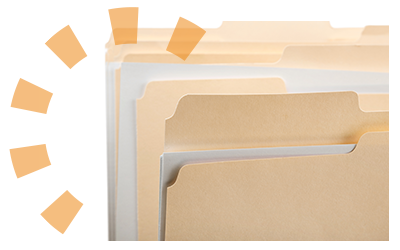
Follow Our Waste Management Plan Template for Your Project
Our customizable waste management plan for construction is available for download and will help you simplify the process for the next time you need to create a WMP for a project.
After You Submit Your Waste Management Plan
Waste management plans require strategy and clear communication. Sustainability trends show that WMPs and diversion rates are only going to become more common, so even if you aren’t doing a LEED project now, it’s good to start implementing a WMP so you can meet project diversion goals when they’re asked of you in future projects.
Looking to achieve other waste-related goals? Consider planning a waste audit. Use our waste audit checklist to get started.
What Do You Think?
Have thoughts on construction waste management plans? We're listening. Head over to Twitter, LinkedIn or Facebook, and use #dumpstersblog to join the conversation.


